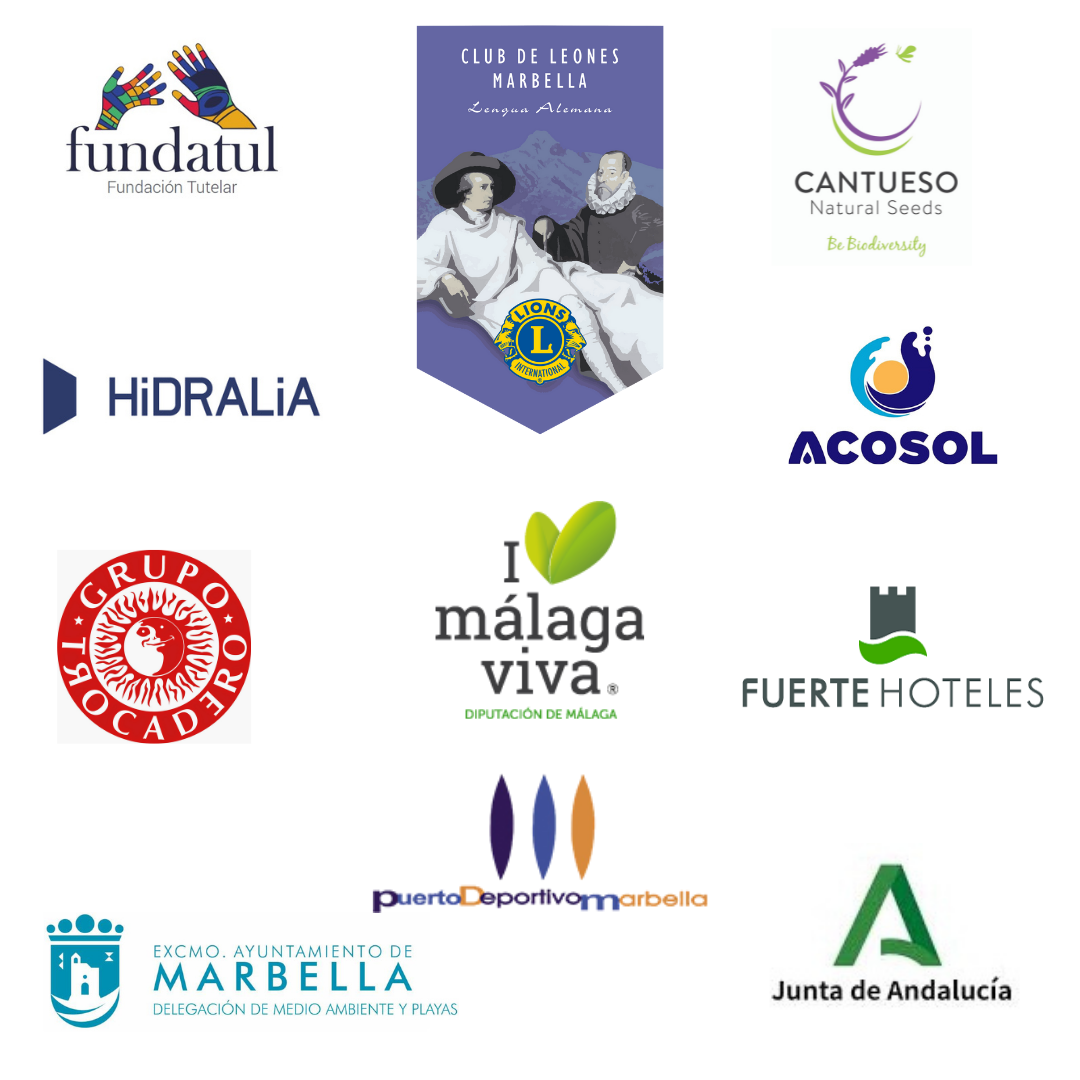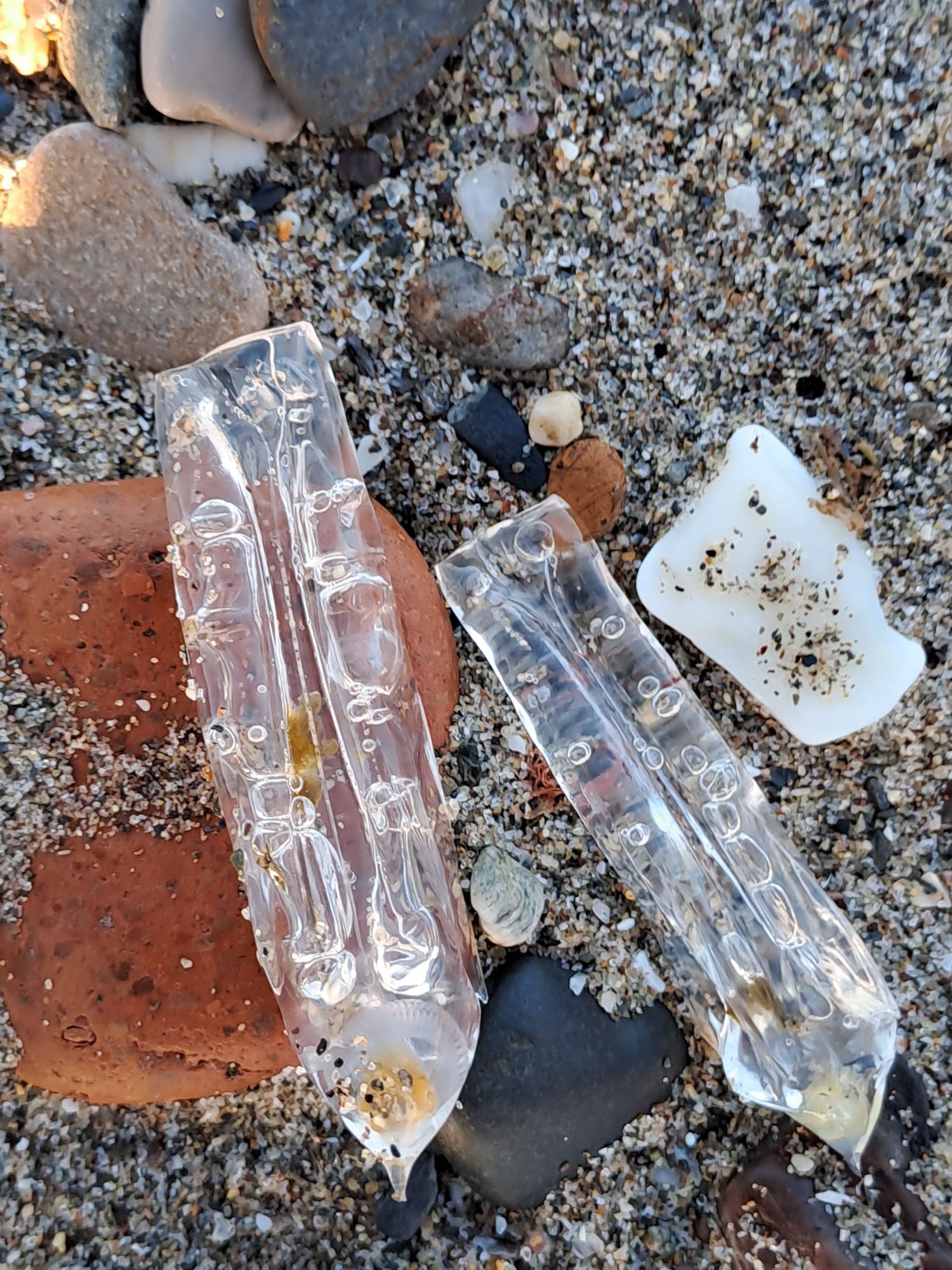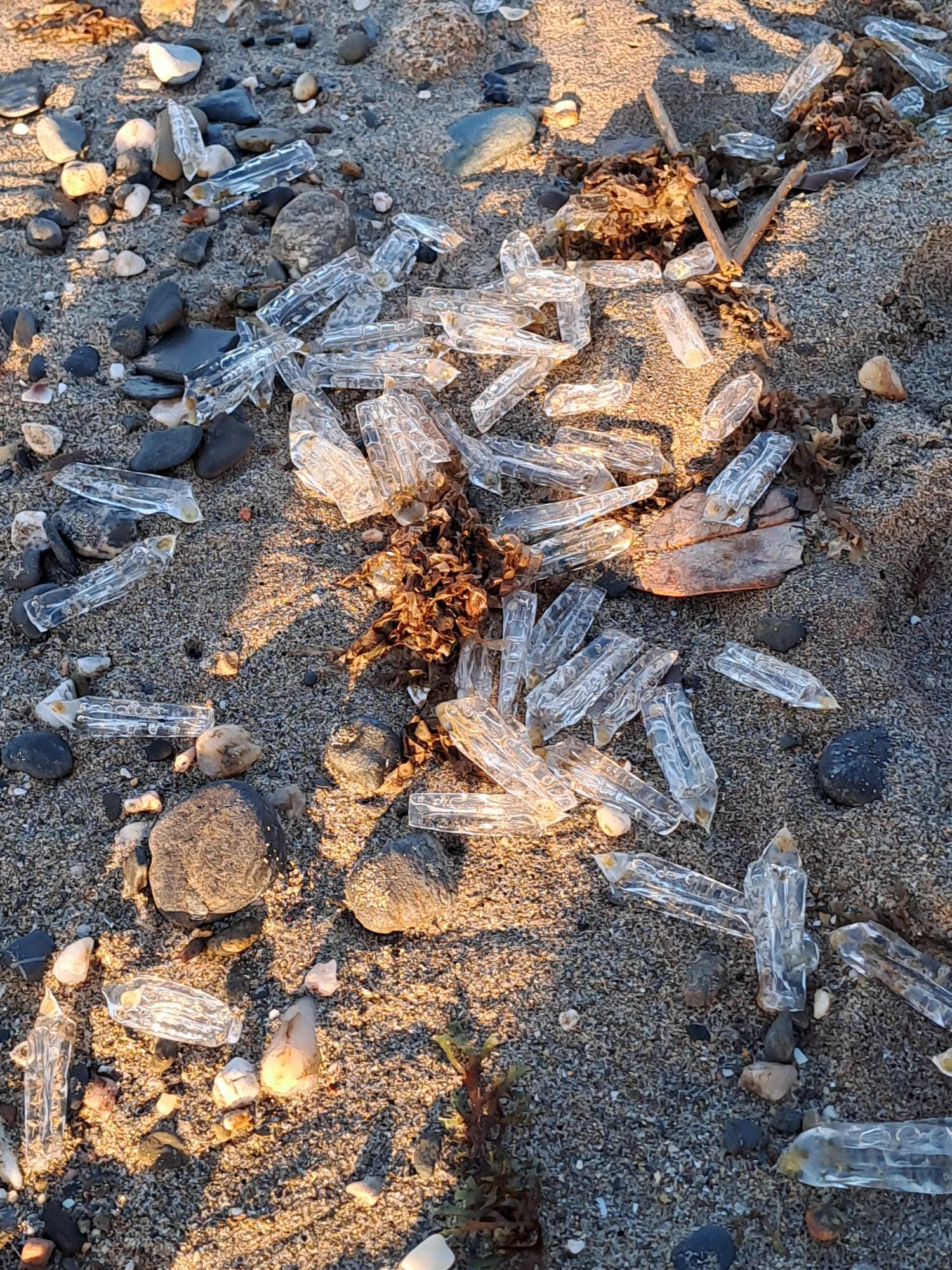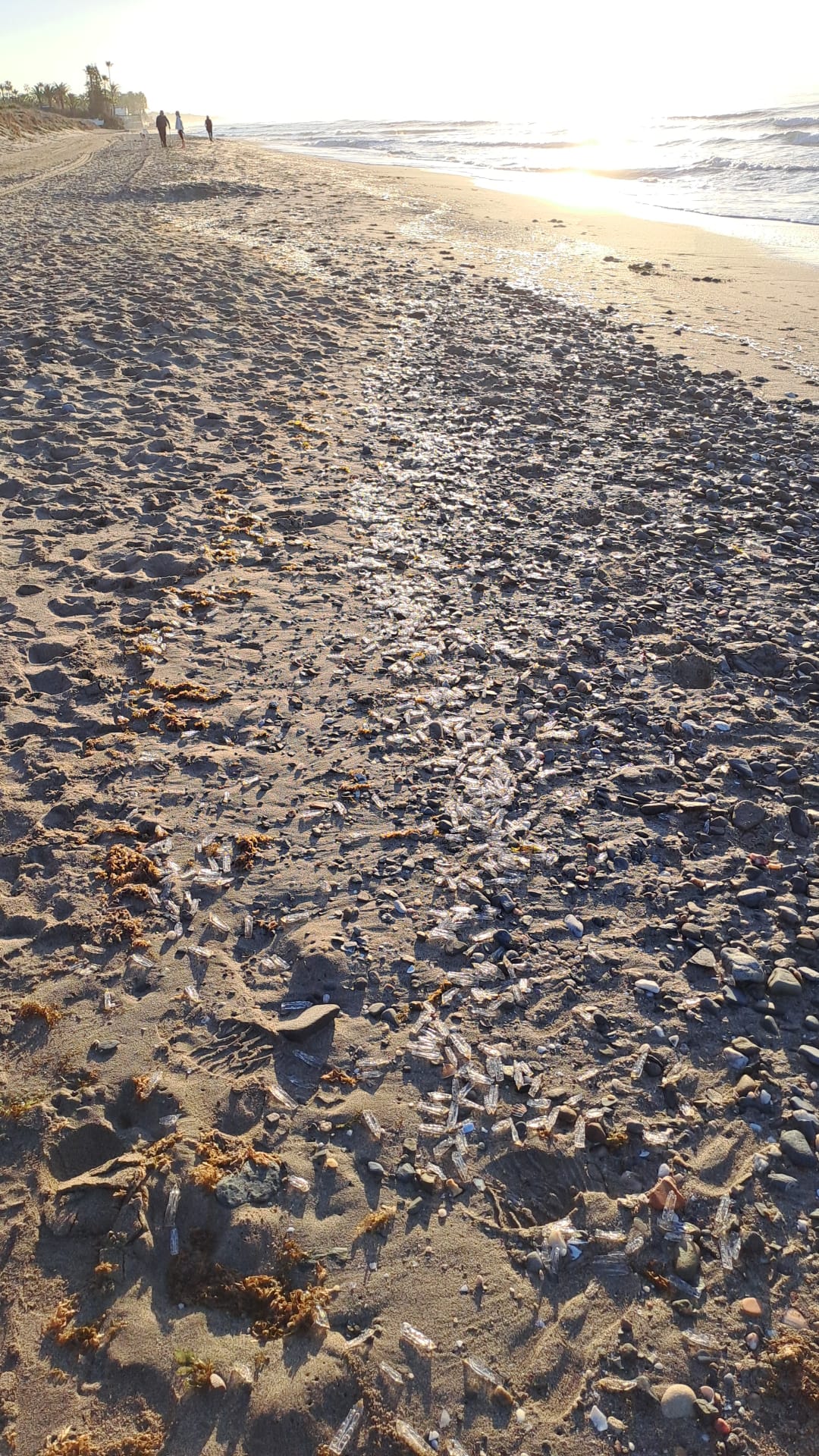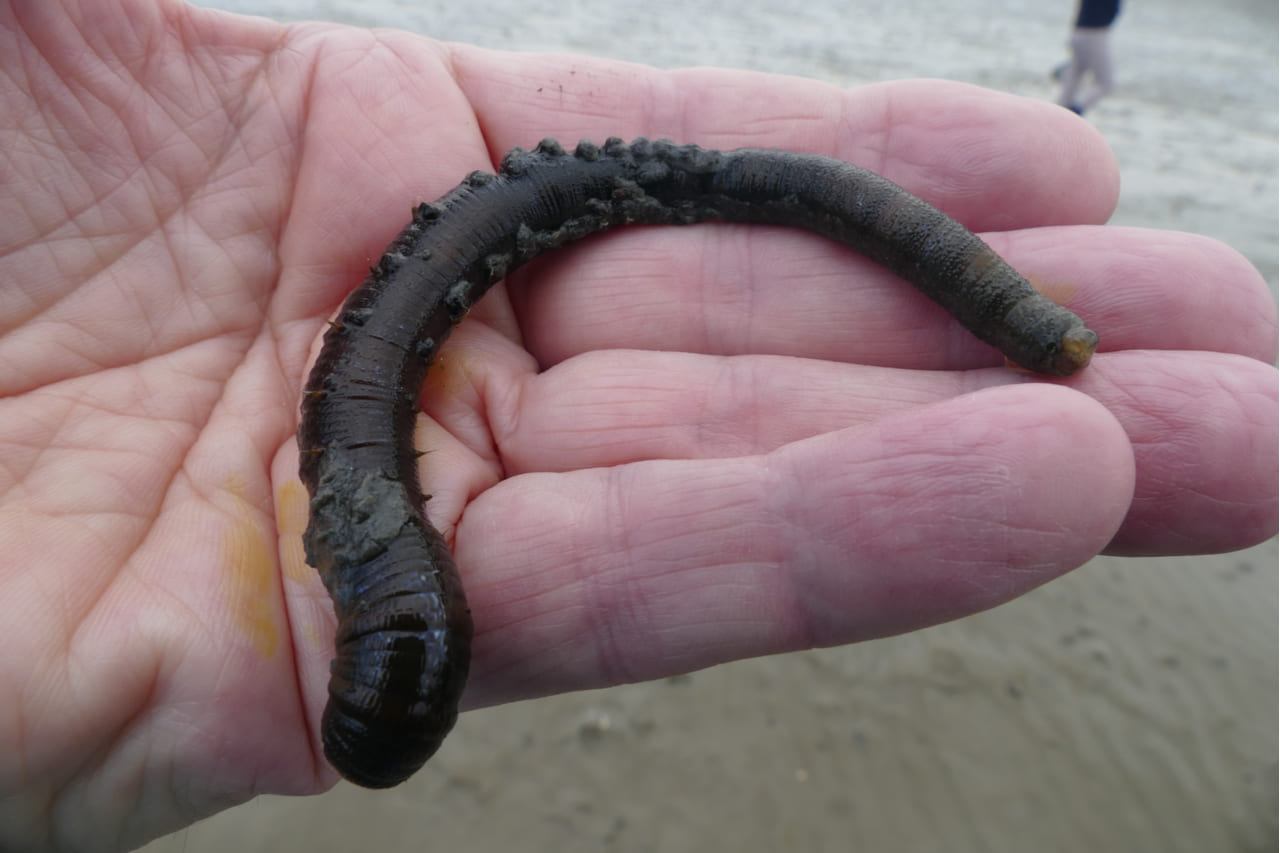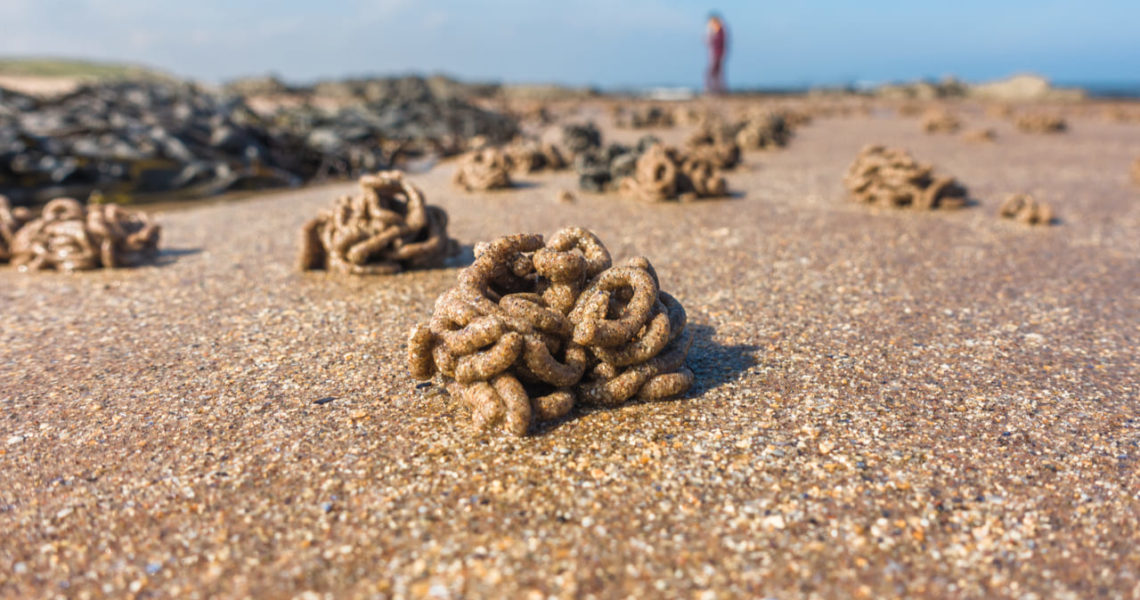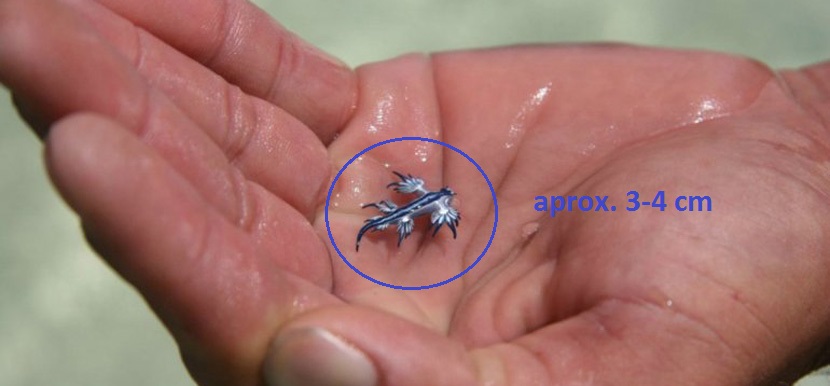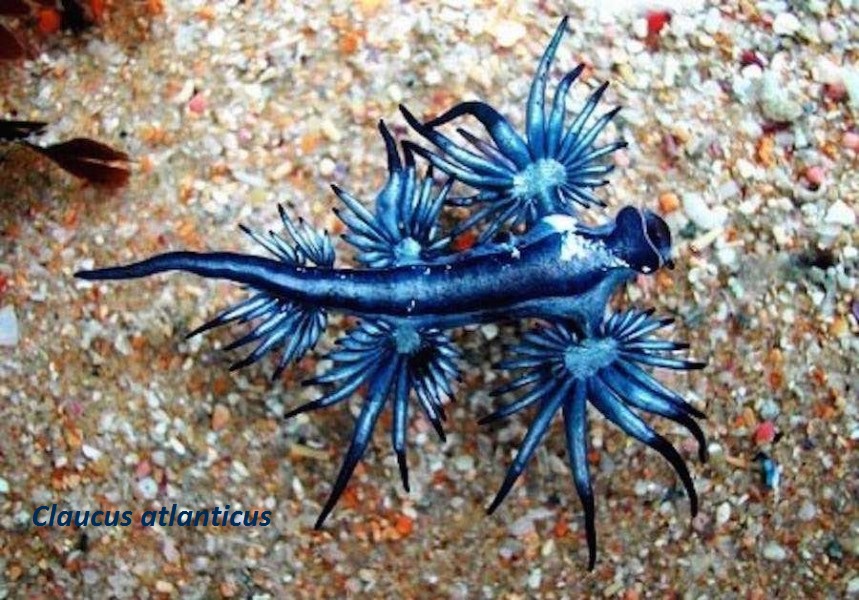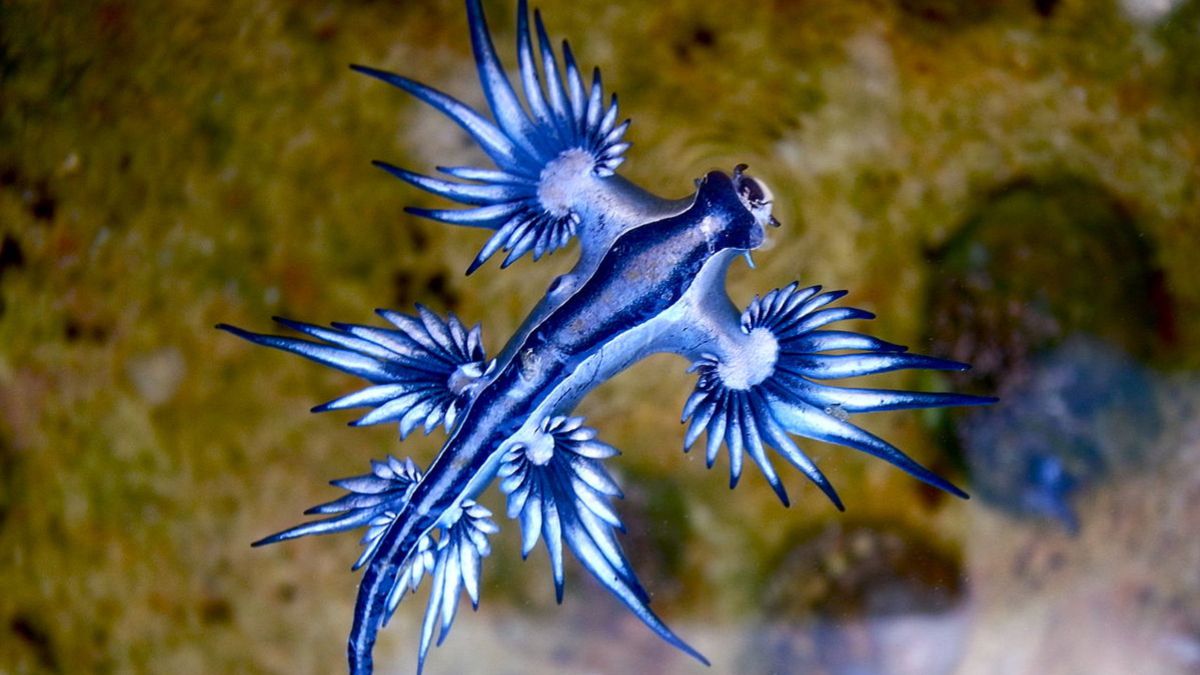Curiosities and articles
2024 – Las Salpas, Salpa fusiformis
The Salpa (Salpa fusiformis Couvier,1804), also known as “Almendritas” in Marbella, are a species of tunicate, although due to their appearance one could think that they are a type of cnidarian (jellyfish). This year, they have arrived early on our shores. They are very odd animals and although simple in appearance, they fulfil very important functions in the ecosystem. Therefore, when we see them, we should not be alarmed because they are harmless.
They are simply structured animals with a soft body, covered by a “tunic” or mantle with a gelatinous secretion, barrel-shaped and with two openings or siphons, one inhalant and the other exhalant. They are transparent, and only their digestive tract gives them some colour, looking like a yellowish button. They are small in size and are part of the zooplankton.
Although most tunicates are sessile, fixed to the substrate or rocks, salps are free-living, moving by pulsations as they expel water from their body. When conditions are good, they form colonies very quickly. This is because they are hermaphrodites, and can alternate asexual and sexual reproduction, being very efficient in multiplying.
Salps are present in all seas and oceans except the Arctic. They are planktivorous, that is, they feed by filtering phytoplankton.
In fact, due to their filtering capacity, they contribute to the quality of the water. They are also capable of absorbing large quantities of CO² from the atmosphere, which then settles in the seabed, contributing to the carbon cycle and reducing pollution. It is estimated that they can absorb about 4,000 tons of CO² per day. This is why more than a threat to us, they are our allies.
Their presence can be related to plankton blooms, indicating good levels of nutrients in the sea and is a sign of productivity. However, due to climate change, especially rising sea temperatures, salp blooms appear to be increasing. This could have negative effects on ecosystems and even on fisheries, by damaging fishing nets. for example.
2022 – El Camaleón y las dunas de Artola
we regret, only in Spanish
April 2022 – WHAT DO WE KNOW ABOUT SANDWORMS?
The Arenicola marina, the worm that builds sand castles with its castings
Sand or Lugworms are animals that go unnoticed. However, they are an essential element in the balance of coastal systems. One of the species in this category are worms belonging to the Arenicola marina species.
They cannot be seen with the naked eye as they spend most of their time in their tunnels or galleries under the sand. These tunnels are U-shaped with two holes, one OUT, through which the worms excrete, and the other IN through which they suck in the sand which contains their food. The exit hole can be easily identified since the excreted sand accumulated there forms a mound of “spaghetti” shaped sand. The entrance is usually a few centimetres from it.
The mounds of sand that the worms leave are a great help in identifying which species has burrowed in there. If the mounds are orderly and round, like a cluster of churros, it is not Arenicola marina but its related species Arenicola defodiens. The mounds cast by Arenicola marina are characterized by being very untidy.
It is curious that the species of the genus Arenicola, despite being called worms, does not belong to the group of annelids like earthworms, but to the polychaetes. It is true that its thick body appears to be soft and smooth. However, a closer look shows that this is not so. Unlike annelids, characterized by having their entire body divided into rings and being smooth (without legs), polychaetes have three main segments and many tiny legs with “setae” or “chaetes” , hair-like structures, in the middle segment. The first segment, where the head is, is used to dig their tunnels and the anus is, of course, at the other end. This is the only segment of the body that is exposed to the outside of the tunnel. It is more vulnerable to predators such as birds, crabs and fish, especially when defecating. The segment has no essential organs; it is not a great loss for the worm and can be regenerated.
Its role in the ecology of coastal areas is essential. To feed, they absorb sand from which they extract small microorganisms and other organic compounds. After being processed in their digestive system, they defecate the residue that they do not digest, returning nutrients to the substrate and thus contributing to the decomposition process of organic matter and enriching the soil. This is why they are an essential link in the food chain. In addition, when feeding, they “filter” out the sand and remove the soil, oxygenating it and contributing to the metabolism of the marine substrate more effectively than other species.
As well as being essential for the proper functioning of the ecosystem, these interesting animals have been the target of scientific studies to understand the effect of microplastic pollution on the marine food chain and how the presence of microplastics in these animals can affect higher trophic levels in the food chain. In biomedicine sandworms come in for serious study. It has been discovered that the blood of Arenicola marina can transport 156 oxygen molecules in a hemoglobin while human hemoglobin can only transport 4. This discovery was the subject of study to improve the oxygenation capacity in COVID-19 patients and to improve the preservation of organs during transplants.
However, these species, which are so important from an ecological and even biomedical point of view, may be better known for their importance in fisheries. In fact, it is one of the most sought-after baits today. That is why the study of the breeding activity of this species is booming.
Here in ProDunas we encourage you, now that the temperatures are beginning to rise, to go out to the foreshore to look for the mounds of sand left by the lugworms. They are easy to see, especially when the tide goes out a bit. The “spaghetti” mounds can then be seen in the first couple of meters of the uncovered shore.
Banta GT., Holmer M, Jensen MH. and Kristensen E., (1999) Effects of two polychaete worms, Nereis diversicolor and Arenicola marina, on aerobic and anaerobic decomposition in a sandy marine sediment. Aquatic Microbial Ecology Vol 19, No 2. P189-204. doi:10.3354/ame019189
Besseling E., Wagner A., Foekema EM., van den Heuvel-Greve MJ. and Koelmans A., (2013) Effects of microplastics in fitness and PCB bioaccumulation by the Lugworm Arenicola marina (L.). Environmental Sciences & Technology 47 (1), 593-600. DOI: 10.1021/es302763x
Garcia Garza ME., Tovar Hernández MA., and Leión González JA. Arenicola Marina, its applications in medicine. Issuu. Available at: https://issuu.com/biologiaysociedad/docs/bys7/s/12076402
McNish J., British Willife, Lugworm poos and the secrets they hold. Nautural History Museum. Available at: https://www.nhm.ac.uk/discover/lugworm-poos-and-the-secrets-they-hold.html
March 2022 – Oddities concerning the Blue Dragon
What do we know about the blue dragon (Glaucus atlanticus), also known as the Sea Butterfly?
The Blue Dragon is a very special animal that shows us, once again, the richness of nature. It was first described by Forster in 1777. Its name comes from the Greek sea god Glaucus. The legend tells us that he partook of some magical seaweed that made him invisible.
It is a species of sea slug of the nudibranch family (Nudibranchia). They are shell-less gastropod molluscs and belong to the opisthobranches subclass, commonly called sea slugs. Its scientific name means “having bare or unprotected gills”.
This sea slug is very small in size. It measures between 3 and 4cm, rarely reaching 5cm. In the Canary Islands up to 290 species of this mollusc can be found, according to Leopoldo Moro, biodiversity technician of the Government of the Canary Islands and an authority on the matter.
It lives upside down and moves just under the surface, attached to it. It uses the colour of the background as a camouflage system making it difficult for predators to locate it. Seen from above it is of an intense blue colour, like the surface of the sea. Seen from below it is white/light blue like the reflections of the sea and the sky.
It is a hermaphrodite like most nudibranchs, that is, it has the ability to produce eggs and sperm at the same time, but it needs another individual to fertilize the eggs. Once fertilized, the eggs are laid in chains of up to 17 centimetres long with between 36 and 96 eggs. These attached themselves to floating objects so that they are borne by the action of the sea and drift. The Blue Dragon lives between three months and a year and is found in mostly warm waters all around the globe.
Do you want to receive our Newsletter?
Do you want to become a member or be our friend of the dunes?
Asociación ProDunas Marbella
The Association works tirelessly for the defence and preservation of the unique ecosystems that survive in the natural sand dune environments in the Province of Málaga; promotes the protection of native flora and small wildlife; promotes recovery, rehabilitation and conservation of interesting biodiversity of sand dunes areas in the municipality of Marbella.
